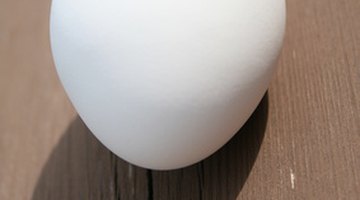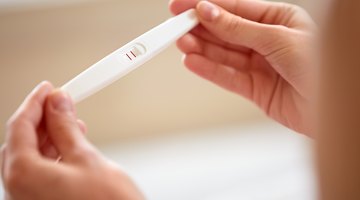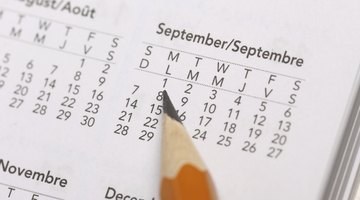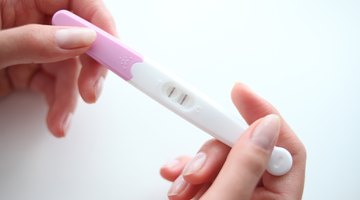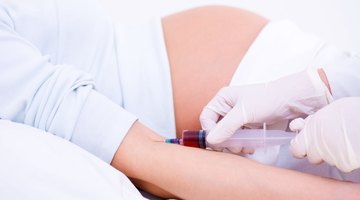How to Get Pregnant With a 38-Day Menstrual Cycle
Not every woman's menstrual cycle follows the typical 28-day schedule.
A 38-day cycle indicates that you ovulate later in your cycle than day 14. Understanding when you ovulate and looking for signs of ovulation can increase your chances of getting pregnant during your long cycle.
Ovulation and Fertility
Ovulation occurs when your ovary releases an egg that travels to the fallopian tube and waits to be fertilized by a sperm. After being released, the egg can live for about 12 to 24 hours.
While the egg only lives up to a day after it enters the fallopian tube, sperm can live longer.
Some sperm can survive in a women's reproductive tract for a maximum of 7 days. As a result, the fertile window includes the week of ovulation: the five days prior to ovulation, the day of ovulation and the day after ovulation. The University of Maryland Medical Center suggests that couples have sex at least every other day during this one-week fertile window to maximize chances of conception.
Timing Your 38-Day Cycle

How Long After Your Period Can You Get Pregnant?
Learn More
If you consistently have a 38-day cycle, calculating your ovulation day is simple. Ovulation typically occurs 14 days prior to the start of your period. So, a woman with a 38-day cycle should ovulate on cycle day 24.
With a 38-day cycle, your fertile window would begin on cycle day 19, continue through ovulation on cycle day 24 and extend into cycle day 25. To boost your chances of getting pregnant, you should have sex at least every other day beginning on cycle day 19 through cycle day 25.
Ovulation Signs
Knowing when you ovulate and having sex around ovulation time increases your chances of conception. Several signs can help you track when your body is gearing up for ovulation.
- Cervical fluid: As ovulation approaches, your cervical fluid may increase in quantity, resulting in discharge that resembles the consistency of an egg white.
- Spotting: Some women may notice a slight amount of spotting or blood-tinged discharge during ovulation.
- Cramping: Abdominal cramps, similar to menstrual cramps, can occur during ovulation as well.
Tracking Ovulation
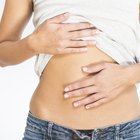
Can You Get Pregnant a Week Before Your Period?
Learn More
Predicting ovulation begins by tracking each period on a calendar and identifying the day you expect to ovulate based on your 38-day cycle length. Then, you can use other methods to confirm ovulation is approaching:
- Basal body temperature charting: Taking your basal body temperature every morning and recording it on a chart indicates the shifts in your body temperature during your cycle. Typically, your temperature drops on the day of ovulation and then increases after ovulation.
Charting your basal body temperature can identify your ovulation day after it has occurred, which can help you discover a pattern of when you typically ovulate. * Ovulation predictor kits: These detect the lutenizing hormone in your urine stream. This hormone increases as ovulation approaches. A positive result on one of these kits indicates that this hormone is surging, meaning ovulation should occur within 12 to 36 hours.
Related Articles
- American Pregnancy Association: Ovulation
- American Pregnancy Association: Determining Your Fertility Window
- University of Maryland Medical Center: Trying to Conceive - Timing and Fertility
- Mayo Clinic: Should I Look for Any Ovulation Signs When I'm Hoping to Conceive?
- Planned Parenthood: Fertility Awareness Methods



